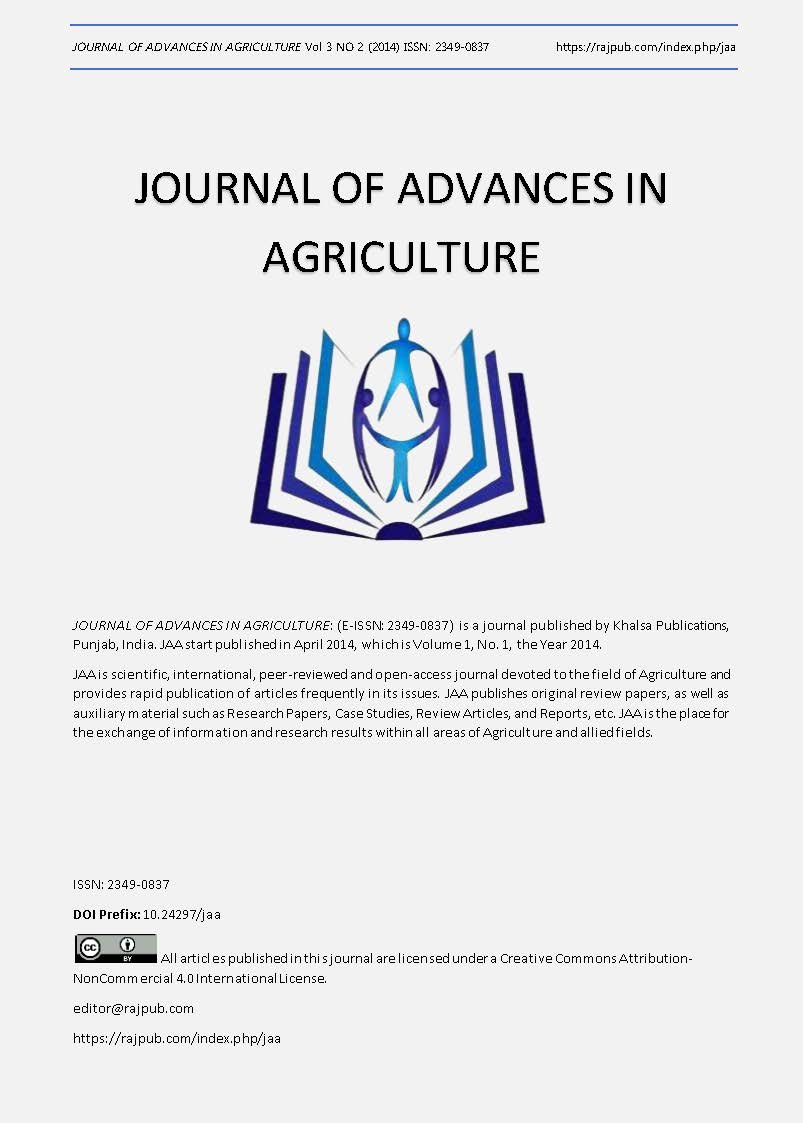Response of different bean genotypes to soil nutrients and water in the semi-arid areas of eastern Kenya
DOI:
https://doi.org/10.24297/jaa.v3i2.4260Keywords:
Water harvesting, Manure, fertility, BeansAbstract
Beans (Phaseolus vulgaris L.) are important legumes in the semi-arid areas of Eastern Kenya. But their production is constrained by water stress within the season and between seasons. A field trial was conducted in the short rains in the year 2011 (October to December) and long rains of 2012 (March to June) at KARI-Katumani (10 35'S and 37014'E, and 1560 metres above mean sea level) to determine the effect of on soil moisture and soil nutrients on grain yield of three market -preferred bean genotypes; namely: Katumani bean 1, NUA 1 and NUA 4. The experiment was conducted using a randomized block design with three replications with treatments in split plot arrangement. Results showed that bean grain yields of Kat B1 and NUA1 grown on tied ridges with manure at 5 tons ha-1 produced significantly (P<0.05) higher yields than furrow or flat tillage beans with and without manure in the short rains of 2011. In the long rains of 2012, Kat B1 and NAU1 beans grown on tied ridges with manure out yielded all the other treatments. In the same season, grain yield of NUA 4 grown on tied ridges with manure, was higher than beans grown on open furrows, flat tillage with and without manure. In both seasons, Kat B1 produced significantly higher grain yields than all the other genotypes except NUA 4 during the short rains of 2011.
Downloads
Downloads
Published
How to Cite
Issue
Section
License
 All articles published in Journal of Advances in Linguistics are licensed under a Creative Commons Attribution 4.0 International License.
All articles published in Journal of Advances in Linguistics are licensed under a Creative Commons Attribution 4.0 International License.




